Everything You Need to Know About Waterproof Balcony & Deck Repairs
Balcony decks are beautiful and can offer personal outdoor space, but did you know that they require annual maintenance? Most owners are unaware of...
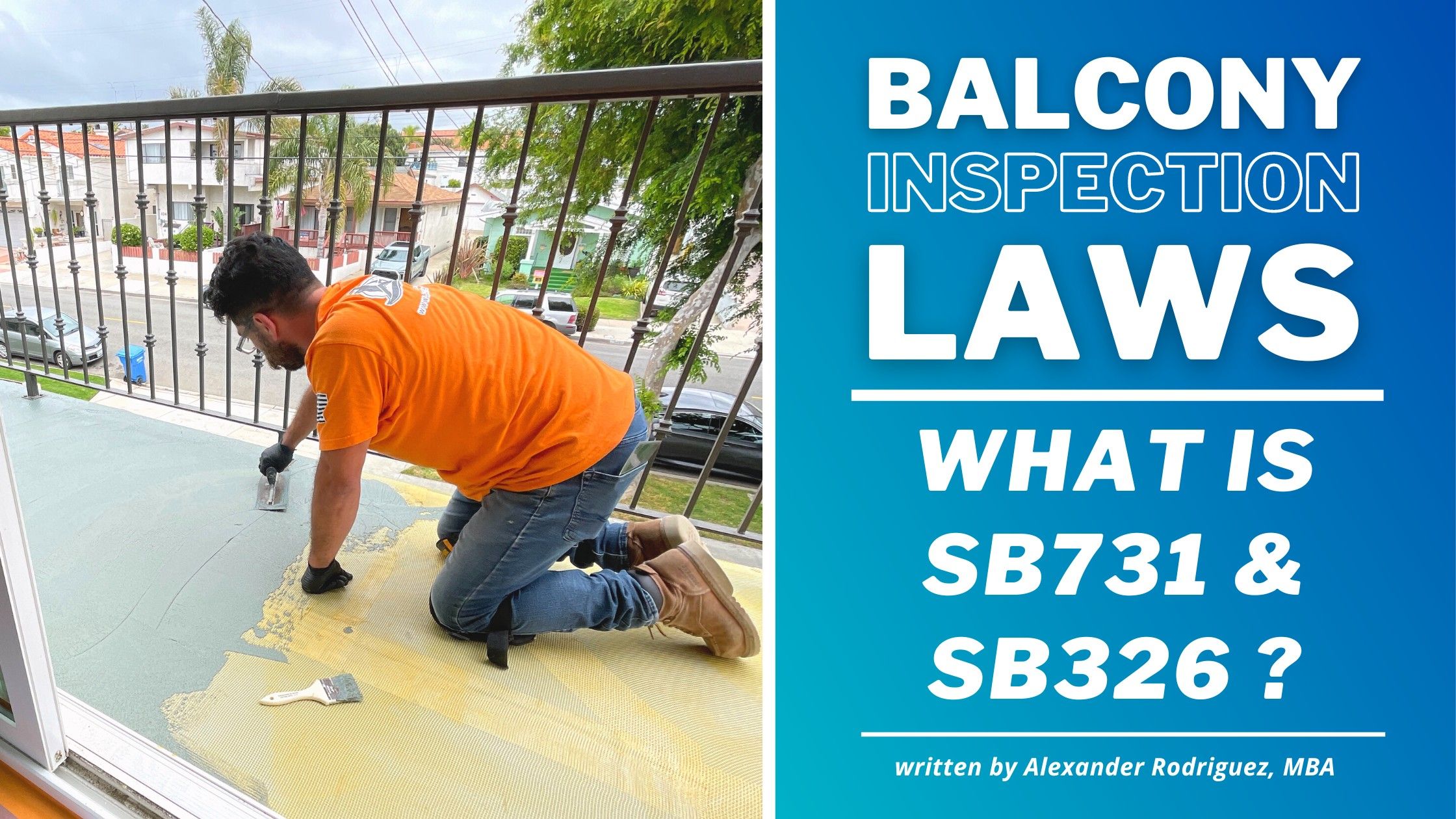
If you own or manage a multifamily property you've probably heard about the so-called 'balcony inspection bill. So just what are SB721 and SB326?
In this article we will cover the basic mandates established by California Senate Bill 721 and Senate Bill 326, when they came into effect, and how they impact apartment and condominium owners.
We will also cover what can cause most common balcony, deck, and walkway damage, and what property owners can do to help protect their properties.
Table of Contents
Ownership/HOA Requirements and Impact
When do Balcony Inspection Bills Take Effect?
Inspection Process, Report, and Recommendations
Finding a Licensed Structural Engineer
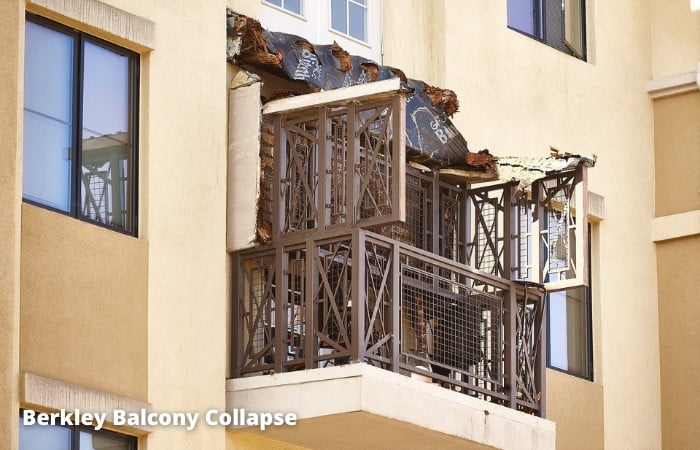 (Berkley Balcony collapse in 2015 - image courtesy of wikimedia commons)
(Berkley Balcony collapse in 2015 - image courtesy of wikimedia commons)
The passing of SB721 and SB326, referred to as "the balcony inspection laws", was prompted by the collapse of a cantilevered balcony in Berkley, California in which six college students lost their lives in 2015.
The balcony that collapsed at the Library Gardens apartment building had suffered from years of water intrusion that caused the wood framing to suffer from dry rot, eventually causing the collapse.
The investigation that followed revealed that the ownership and management had ignored "red flags" from tenants that reported issues like mushrooms growing on the surface, and tilting/sinking of the balcony.
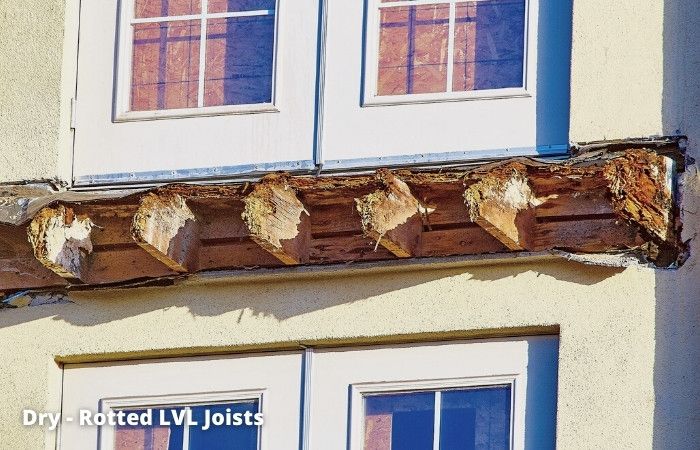 (Rotted LVL joists after balcony collapse - image courtesy of wikimedia commons)
(Rotted LVL joists after balcony collapse - image courtesy of wikimedia commons)
From the pictures that were published after the incident, we can see that dry rot was a major contributing factor, and dry rot can only be prevented with appropriate waterproofing and maintenance.
The 8-year-old cantilevered floor joists rotted to a breaking point during a birthday celebration in which 13 people fell five stories to the ground below, and tragically 6 people lost their lives.
The ensuing public outcry and lawsuits compelled government officials in Sacramento to act by passing new legislation in the hopes of preventing similar tragedies.
 (Governor Newsom signing new bills into law - image courtesy of Capital Public Radio)
(Governor Newsom signing new bills into law - image courtesy of Capital Public Radio)
As previously mentioned, the ownership and management of the property in Berkley repeatedly ignored tenant concerns about the safety of their balconies. The California Balcony Inspection Laws attempt to remedy this by requiring scheduled inspections for Multifamily, HOA, and Condo properties with balconies and decks.
Here are some of the impacts and requirements for property managers and owners need to satisfy to comply with the Balcony Inspection Laws.
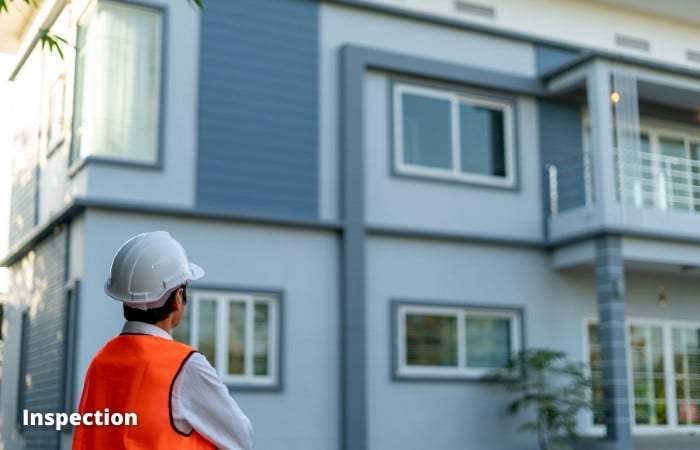 (The Balcony Inspection will strictly focus on balconies/decks only - image used with permission)
(The Balcony Inspection will strictly focus on balconies/decks only - image used with permission)
Balcony inspections need to be performed by Licensed Structural Engineers and are only limited to certain exterior elements. For example, the inspection will disregard any foundation, roof, or driveway issues, and will only focus on exterior walkways, balconies, and decks.
Here are some of the inspection requirements as detailed by SB721 and SB326.
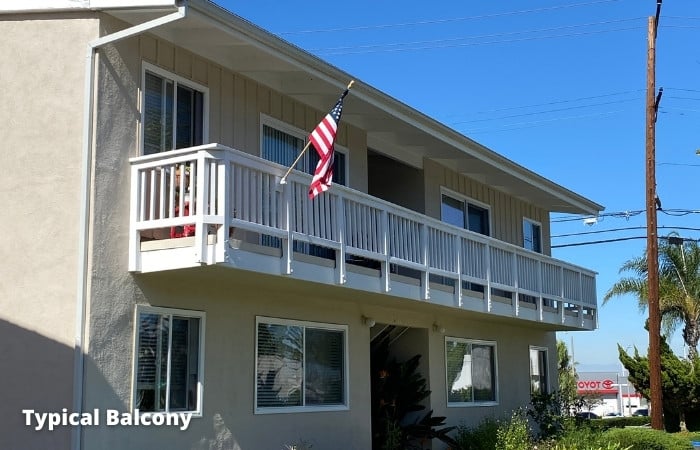
(Typical balcony found across the South Bay)
California SB721 and SB326 took effect January 1, 2020. The types of structures that are regulated by these laws are exterior, elevated elements (EEE), commonly observed, exterior wood-frame balconies, walkways, and decks in apartment and condo complexes.
Specifically, wood frame multifamily residential buildings. Specifically, SB721 applies to apartment buildings with three or more units; while SB326 applies to condominiums and condominium associations with at least two units.
All properties that fall under the umbrella of the balcony inspection laws are required to comply with the first inspection by 2024, and every 9 years after that point.
‘Elevated Exterior Elements’ that require inspection in accordance to SB721 and SB326 include:
SB326 explicitly calls for these inspections to be performed by a licensed architect or structural engineer. The law calls for these buildings to be inspected by a licensed architect or structural engineer. Contractors and Certified inspectors are not authorized to perform these inspections, as the architect or engineer performing the inspection will be liable for the information and recommendations in their report.
It makes more sense for apartment owners and condo HOAs to contract a California Licensed Structural Engineer to perform the balcony inspections.
The reason is, if there is damage to repair, a structural engineer is the professional with the credentials to design a structural engineering plan.
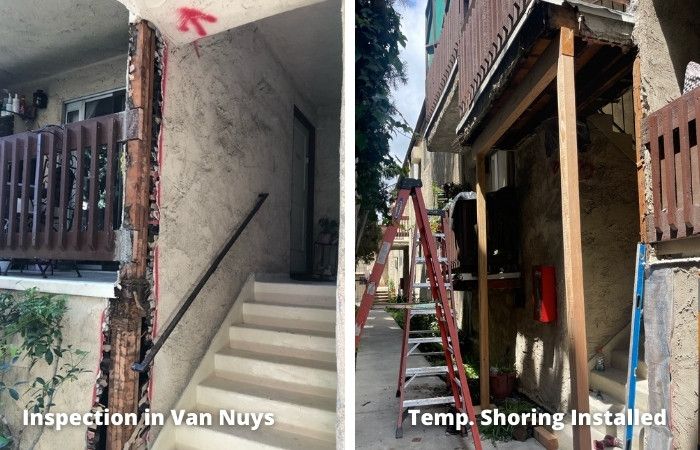
(Example of an inspection in Van Nuys - temporary shoring was installed after dangerous conditions were found)
When you hire a structural engineer they will schedule a date to inspect your property in person. Some firms will strictly conduct a visual inspection, others will use a borescope camera to observe the interior framing, while the most diligent firms will recommend removing stucco to fully observe the internal structure.
Once the structural engineers have completed the in-person inspection, they will draft a detailed report of all the elements and deficiencies they observed and will provide a detailed list of recommendations for repairs if necessary.
These reports will be utilized by General Contractors to provide quotes, bids, and estimates for any repairs that might be required.
Property owners and HOAs are required to complete an inspection every 9 years and are required to comply with the first inspection by 2024. If deficiencies are found, the inspection laws require preventative measures and repairs to be made immediately.
In addition to the inspections, HOAs are also required to perform a 'Reserve Study' every 3 years, which is an analysis of cash reserves available for capital improvements of the property.
Finding a licensed structural engineer is made easy thanks to the Structural Engineers Association of Southern California (SEAOSC), their directory can help you find an engineer based on specialty or location. You can access the SEAOSC directory by clicking here.
Additionally, the State of California has free resources online for consumers to verify licensing information when considering a structural engineer. You can access the California Department of Consumer Affairs License Lookup website by clicking here.
We've collaborated with Zenith Engineers of Los Angeles for dozens of projects over the last five years, and we highly recommend them for any balcony inspections you might need help with. You can learn more about Zenith's Balcony Inspection services by clicking here.
The number one cause of most balcony damage is water and moisture; when the top waterproofing layer fails, water and moisture can reach the interior wood framing and can cause severe damage if left unrepaired. Deferred maintenance and failure to maintain the waterproofing is a contributing factor that leads to damage to the structural framing of a deck, walkway, or balcony.
Major damage to structural framing is not always found, however, deferred maintenance can drastically increase the total cost of necessary repairs.
The majority of balconies are Cantilevered, extending beyond the main structure, these decks and walkways are some of the most expensive structures to replace.
The most common cause of structural framing damage in Decks and walkways:
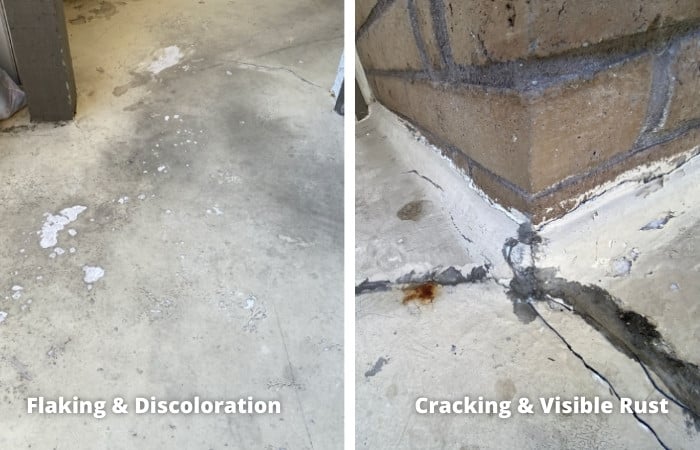 (These common conditions are indicators that a balcony requires some type of maintenance)
(These common conditions are indicators that a balcony requires some type of maintenance)
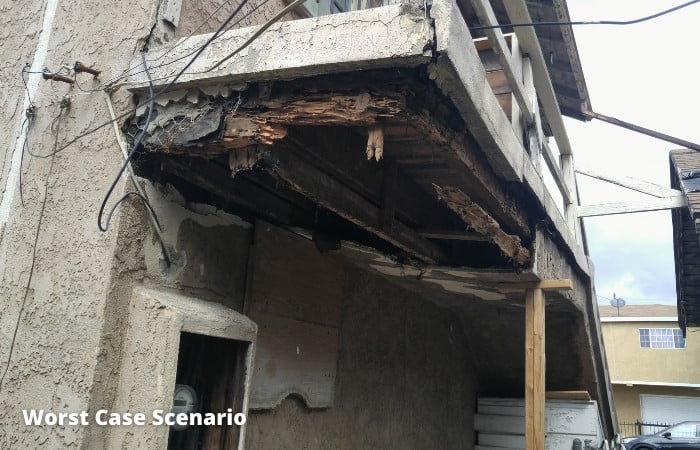
(This balcony in Torrance has been leaking for years - the damage is extensive and will require a total replacement)
We have seen our fair share of badly damaged balconies over the years. When balconies and decks develop cracks water and moisture penetrate the interior framing, causing dry-rot damage over time. If left unrepaired, in a span of a few years, the dry rot can be so severe that a total replacement might be necessary.
So what are the visual signs of damage? How can you spot potential damage? The damage can vary from light discoloration of the structural member and be as severe as total rot of all load-bearing structural members. The pictures below capture a worst-case scenario of a cantilevered walkway that must be removed and rebuilt.
In the images below you can see how dry rot can literally deteriorate the wooden structure of a balcony. This particular balcony shown above suffered from over 10 years of deferred maintenance and now requires a complete tear-down. This deck is about to collapse under its own weight.
The dry rot and termite damage is as bad as it gets. In this scenario, a structural engineer will need to design a repair solution to replace the deck. Small repairs can cost a few thousand dollars, but if there is extensive damage and heavy repairs are necessary it can cost in the tens of thousands to repair.
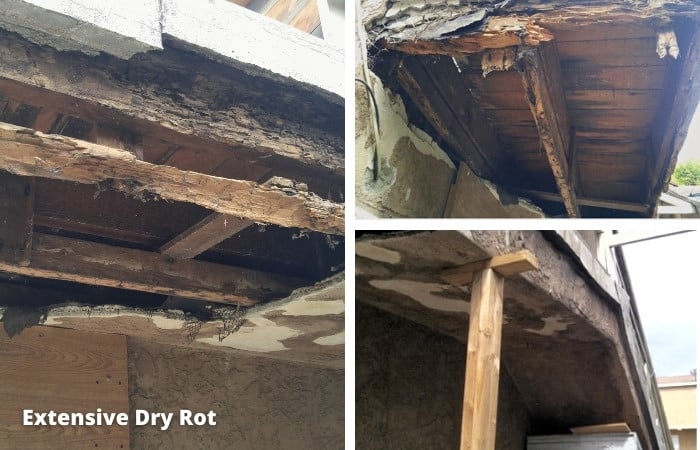 (Worst case scenario: dry rot, mold, fungi, and crumbling stucco. This balcony needs to be completely replaced)
(Worst case scenario: dry rot, mold, fungi, and crumbling stucco. This balcony needs to be completely replaced)
The picture above is an actual site inspection picture. You can see mold growing through the stucco surface and the stucco water damage under the walkway.
The water that penetrated the walkway surface also penetrated the stucco and caused it to start breaking down. Any water trapped between the stucco and the structural framing will cause the wood to rot.
Eventually, fungi grow on the structural framing, and it begins to lose its strength. If your balcony or deck is well maintained small maintenance and repairs can be in the $ thousands (per balcony), but if your property is found to have dry rot and requires extensive repairs, you can expect to pay in the $ tens of thousands (per balcony) to comply with the inspection bill requirements and create a safe dwelling for your tenants.
Want to Learn More About Balconies?
In Closing, a regular maintenance schedule can save you thousands of dollars in damage. Understand that the longer a deck is leaking, the greater the damage to the internal structural framing will be.
In most cases, the structural engineers will not be able to assess the true damage to structural framing unless some of the stucco or subfloor is removed. Consult with a trusted engineer and ask them if they have identified any sections of the balcony, walkway, or deck that should have some exploratory demo.
Remember, catching damage early on can potentially save you thousands in repairs. Don't be afraid to reach out to an engineer or contractor to help identify any repairs your property might need. Till next time.
Alex's Balcony Tips:

Works Cited:
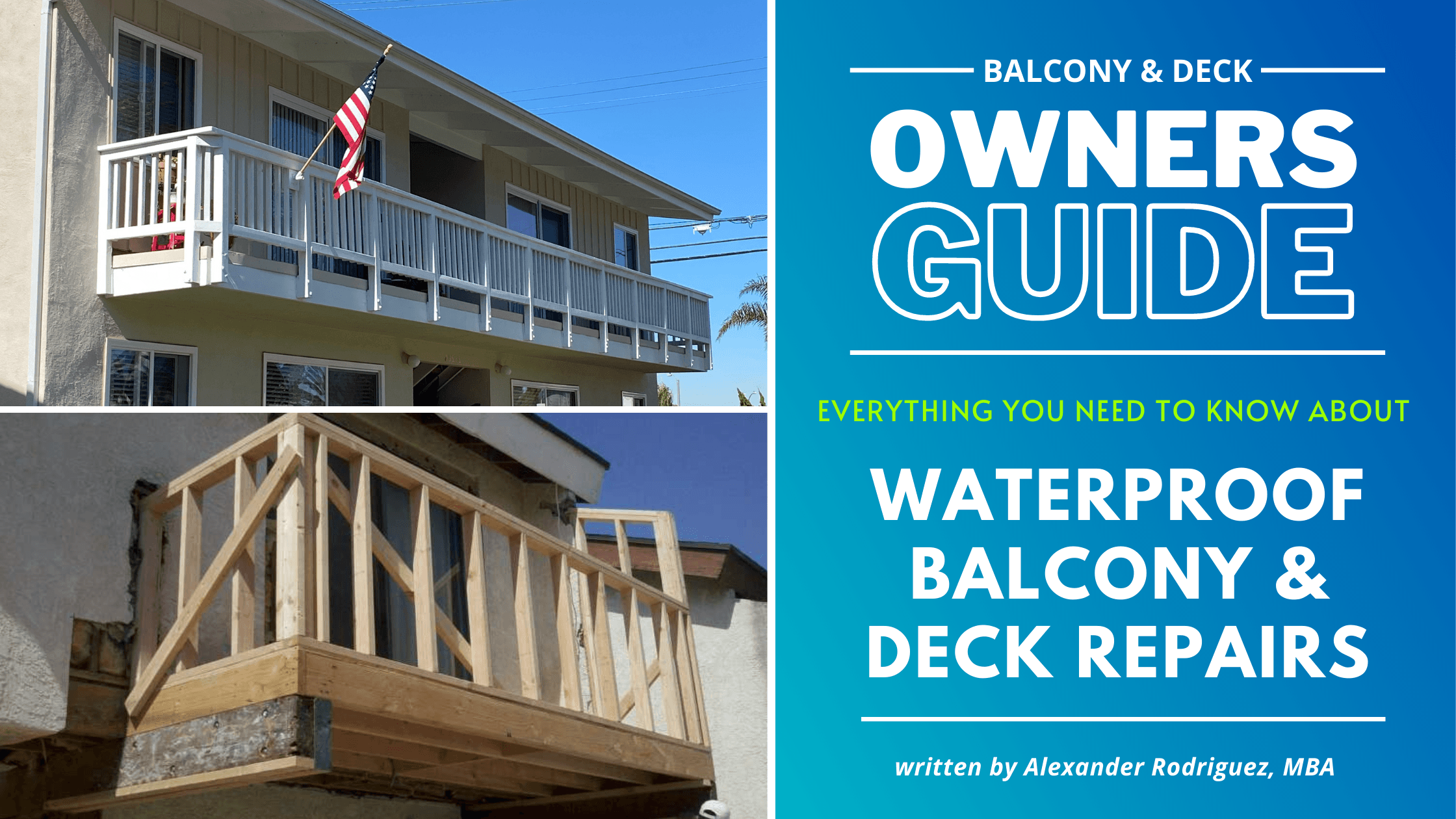
Balcony decks are beautiful and can offer personal outdoor space, but did you know that they require annual maintenance? Most owners are unaware of...
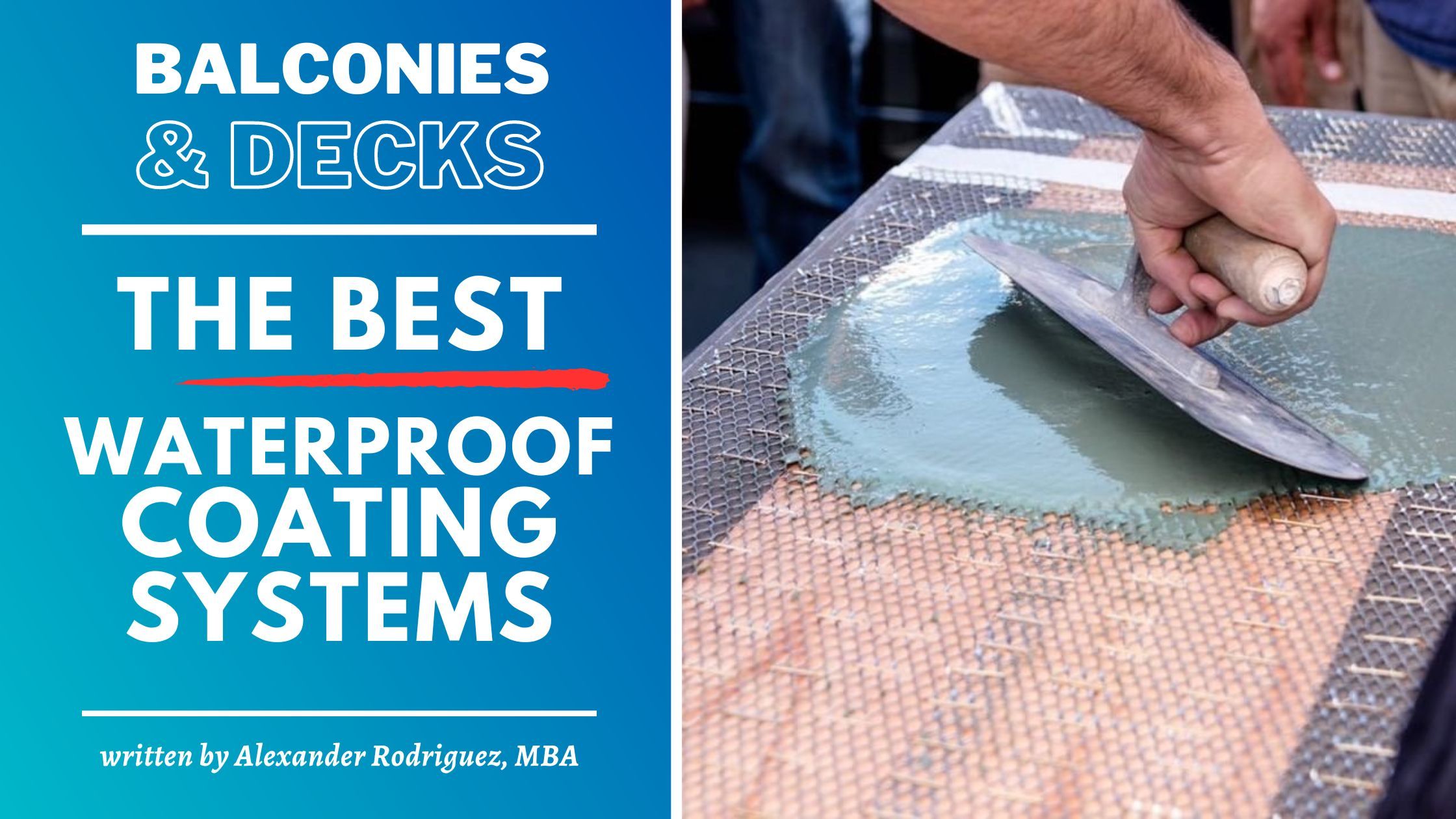
Property owners and managers have plenty of options to choose from when it comes to waterproofing a deck or balcony. So how do you choose the best...
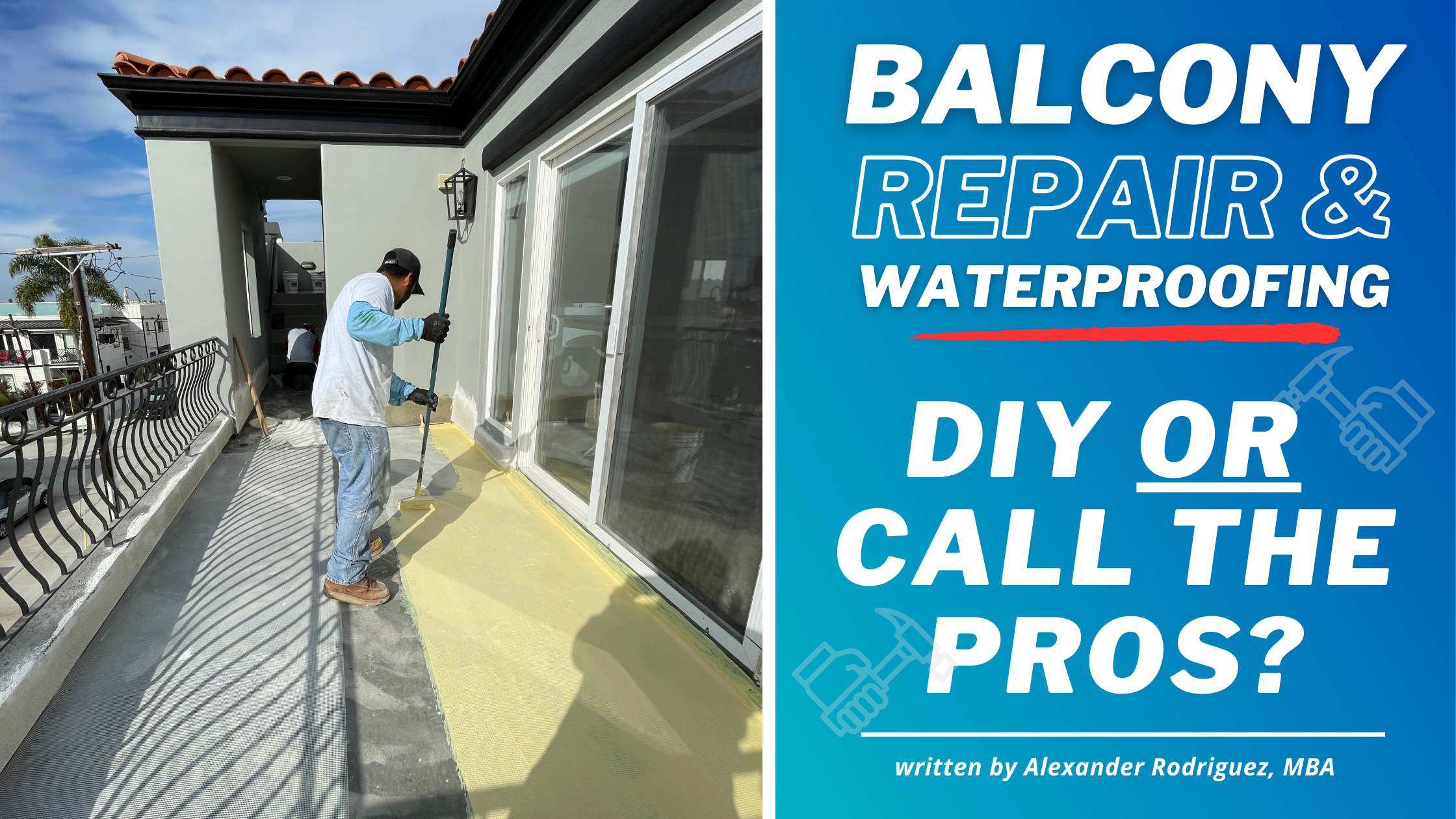
Picture this: a warm cup of coffee in hand, the gentle morning sun kissing your face as you take in the breathtaking cityscape from your balcony. Or...